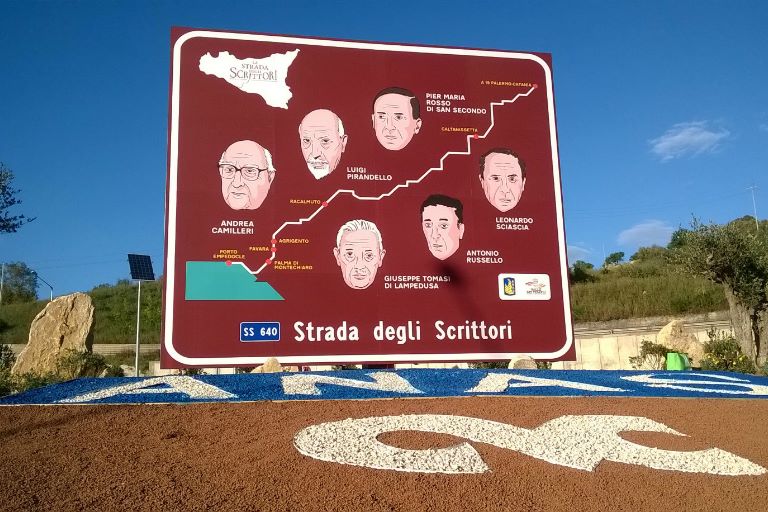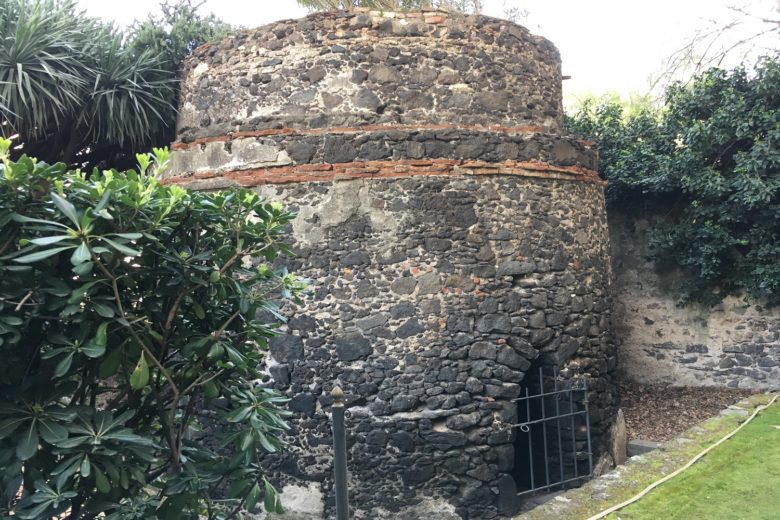What was there before the Greeks: the “steady world” under Catania of Petralia cave
This cavity has lava origins and a wonderful “dog’s teeth” roof, covered by reflow stalactites formed by the contact of fluid lava with the air.
In the busy via Leucatia, behind the ring road of Catania, a sign by a crossroads with no outlet (via Liardo) goes almost unnoticed. It reads “Presepe Grotte Petralia, via F. Liardo 17”, but few people know that Petralia cave is right there and that it is the only one in Europe to be at such a superficial level (138 m above sea level), about 3 meters below the road level. When you reach Via Liardo 17, you will find the gate of a private home: that’s the entrance to the cave. An elderly lady, Caterina Petralia, greets visitors in the courtyard of her house to lead them into the cavity on the back. Apparently, the cave seems to consist only of a room used during the war as an air raid shelter, but it is not so. It extends for over 400 meters and continues beyond a ditch: “My father was very attached to this cave. After his death, I went down there with my children. I sat down at the end of the feasible path and lit a cigarette. Observing the direction of the smoke, I suddenly realized that my cave was much bigger than I imagined” says Mrs. Petralia with great emotion.
The cavity has a significant geological and cultural interest: it is of lava origin and has a wonderful “dog’s teeth” roof, covered by reflow stalactites formed by the contact of fluid lava with the air. In addition to its naturalistic aspect, which Mrs Petralia knows well (as she graduated in natural science), it is important not to forget the historical one. The cave dates back to 5000 years ago and includes numerous findings dating back to the late Copper Age and early Bronze Age, according to what was found thanks to the radiocarbon dating. Some examples are the red ceramics with black figures from the Castellucian period and some vases in black paste. Moreover, animal (perhaps even of dwarf elephants) and human bones belonging to men, women and children, and with traces of red ocher, testify to the funeral use of this antrum: there are no magnificent burials, but the bones are accompanied by shards of meal pots that had a ritual value. In fact, after someone’s death or during their initiation into adult life, some of the objects they owned were probably shattered and scattered throughout the cave to indicate the abandonment of their previous life and the beginning of a new one. A large spherical boulder of fluvial origin is located inside the cave, near an enclosure of seven smaller stones, whose cultural use is almost certain: even the regular arrangement of carbonaceous ruins testifying the ignition of underground fires would seem to confirm this thesis.
Now, a small plea. The cave is a true asset no one would ever expect to find in town, but not everyone knows that it has been saved by miracle. Its scientific discover dates back only to the 90s, when they tried to destroy it while constructing an important gutter canal. With great tenacity, Mrs. Petralia asked the help of the Superintendence of Catania, where she personally brought a fragment of ceramics to witness the value of her cave. Many of those findings soon became the subject of international exhibitions, even if nobody has ever done anything to really take care of that place. Suffice it to say that every year the lady used to set up a nativity scene inside, while this year it was not possible, due to a failure of the lighting system that has not yet been solved. Safeguard, maintenance and a simple iron walkway to walk the cave without trampling its archaeological remains: this would be enough, and this is all that needs Caterina Petralia, who in many years has never wanted to earn anything from the tourists passing by her property. “There’s a steady world down there and it’s enough for me to keep it safe”, says its owner with emotion and pride.
Translated by Eva Luna Mascolino



